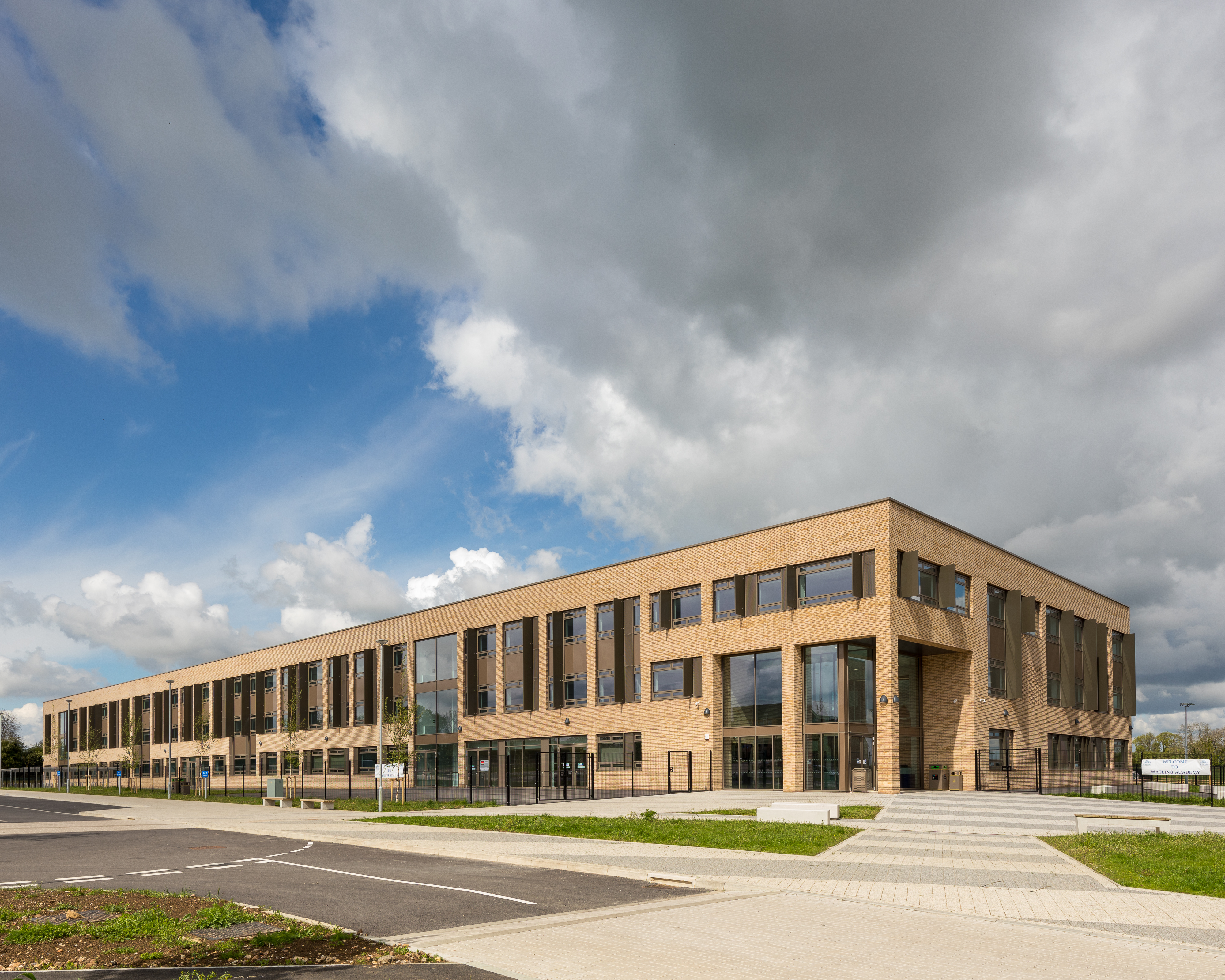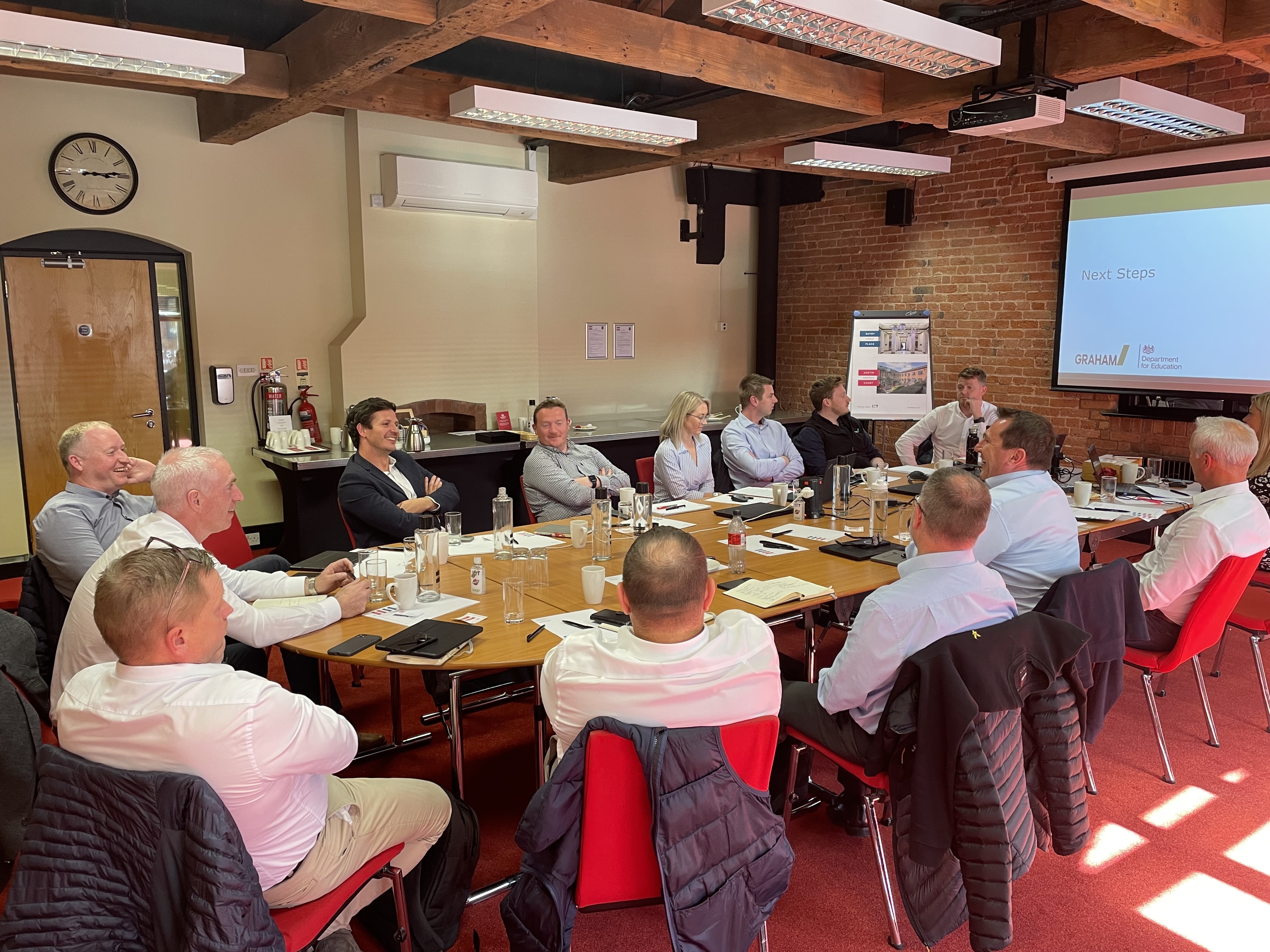The education landscape is evolving, driven by changing demands and the need to modernise existing buildings affected by issues like RAAC, and the push for more sustainable, future-proof facilities. To meet these challenges, the construction industry must move beyond traditional methods and embrace innovative approaches that deliver faster, cost-effective, and adaptable solutions.
Industrialised construction, using pre-designed, standardised components – often called a ‘kit of parts’ – is transforming school construction, paving the way for a new era of educational facilities. GRAHAM’s evolving kit of parts, supported by a digital platform, features pre-engineered, interchangeable components and adjacency clusters that integrate seamlessly. This approach combines efficiency with the flexibility needed to create bespoke, fit-for-purpose learning environments to meet the dynamic needs of students today and in the future.
Our comprehensive kit of parts directly addresses education estates’ requirements, in particular sustainability targets, including the drive towards net-zero carbon in operation. This approach, combined with standardised design and pre-construction processes, delivers value for money and improves programme efficiencies across the project lifecycle.
Standardisation allows for more predictable budgeting and financial planning. By using pre-engineered components, we can provide more accurate cost estimates early in the project, avoiding unexpected budget overruns. This is essential for public sector projects, where strict budgets are in place. Moreover, consistent, high-quality components result in better overall quality and longevity, allowing us to deliver buildings that not only meet but exceed safety and durability standards, ensuring they are built to last.
Balancing standardisation with adaptability
While standardisation offers clear benefits, adaptability is just as critical. Schools are dynamic environments, and designs need to accommodate evolving needs and demands. This is where the kit of parts excels in allowing flexibility without sacrificing efficiency.
As digital literacy grows in importance, schools may need to reconfigure traditional spaces such as libraries into digital zones, for example. The flexible nature of the kit of parts allows for such reconfigurations to be made easily and cost-effectively, without the need for extensive structural changes.
The ability to easily reconfigure spaces is key to ensuring that school buildings remain relevant and supportive of modern teaching practices, accessibility and wellbeing. Whether it’s adding more digital infrastructure or creating spaces that foster collaboration and support student wellbeing, the kit of parts is designed to evolve with educational priorities and curriculum needs, allowing for adaptability.
Central to the success of our kit of parts is its versatility and the integration of digital design tools. By using BIM, we can create detailed visualisations, detect clashes before they happen, and build virtual prototypes. The real-time collaboration enabled by BIM also allows stakeholders to work together seamlessly, providing input during the design phase and ensuring that the final build meets the specific needs of the school. By embracing innovation in this way, we can also enhance the flexibility and customisation of the kit of parts, allowing it to be better tailored to the individual needs of each educational facility.

Building for the future: quality, safety, and sustainability
The need for sustainable and resilient school buildings continues to be a driving force. Features such as the fabric first approach , renewable energy systems, and efficient climate control are integrated into the design, ensuring that schools are capable of withstanding the challenges posed by climate change, while making it easier to meet modern environmental standards and future regulatory changes.
Quality and safety assurance are also paramount. Rigorous quality control measures are in place to ensure that each school built with the kit of parts exceeds expectations. From design to delivery, we make sure that every component meets the highest standards for safety, durability, and environmental performance.
Paving the way for a new era in school construction
The coming years will see a growing demand for educational spaces that can quickly adapt to changing teaching approaches and fluctuating student populations. Schools will need to accommodate various learning styles, including traditional classroom settings, collaborative spaces, and virtual learning environments.
Our kit of parts approach aligns with Modern Methods of Construction (MMC) This reflects the key policies of the Construction Playbook, relating to programme management, MMC, sustainability, and the use of standardisation when building education and other public sector facilities.
The adoption of industrialised construction methods, centred on a standardised kit of parts, can revolutionise school design and delivery. It represents a significant step forward in the quest to build more schools, more quickly, and to the highest standards – an approach that can be replicated across the broader education sector and other public buildings.
By leveraging these methods, we can deliver state-of-the-art educational spaces that are not only fit for today’s learning needs but also adaptable to tomorrow’s challenges. This approach ensures that schools are equipped to provide safe, inspiring environments while meeting evolving educational, technological, and environmental requirements.



